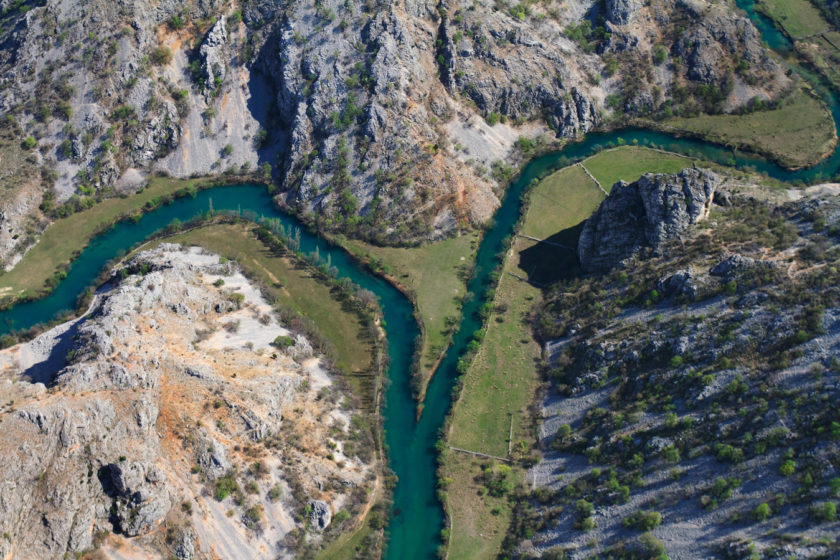
Photo: Goran Šafarek/WWF
The company “Hydroelectric power plants” gave up construction of a small hydropower plant (SHPP) on the river Krupa in Velebit Nature Park, which was welcomed by a number of associations for the protection of nature, according to the World Wide Fund for Nature (WWF).
“’Hydroelectric power plants’ informed the Ministry of Nature Protection and Energy that they are withdrawing from the process of reviewing the environmental assessment for the construction of a small hydropower plant on the river Krupa. In doing so, the investor de facto withdrew from the project in Velebit Nature Park,” said the WWF in a statement.
Experts from BIOM, Eko Pan, Croatian Society for the Protection of Birds and Nature and the WWF have strongly opposed the use of Krupa river for hydropower purposes since September.
Krupa is the largest tributary of the river Zrmanja and an integral part of the Velebit Nature Park, as well as part of the European ecological network Natura 2000. Construction of the hydro plant would have had a big impact on the ecology and natural features for which the area was placed under Croatian and international protection, the statement said.
“The decision of investor to withdraw from this project is more than welcome, because it is the only right one, for the sake of preserving one of the fundamental natural phenomena for which the Velebit Nature Park was declared, and those are travertine barriers. The management of the park was also against construction, and made that clear to the investor,” said Irma Popović Dujmović, project coordinator at the WWF Adria.
The WWF says that the investor planned to build a hydropower plant of 1.6 MW, a dam 1.5 meters high and 45 meters long, and a 170 meters long pipeline, which would redirect the flow of the river to the turbine. They say that the whole procedure would have affected 2.000 square meters of the riverbed, and the vast majority of natural travertine barriers.
The area is so remote that the investor even considered using a helicopter in construction, regardless of the impact of noise, vortices of air and exhaust gases to the nature and wildlife of this protected area, the statement added.
Representatives of different associations for the protection of nature pointed out that such plans canceled very purpose of protected areas, citing the example of the river Mrežnica, where the construction of a small hydro plant caused degradation of the locality.









Be the first one to comment on this article.